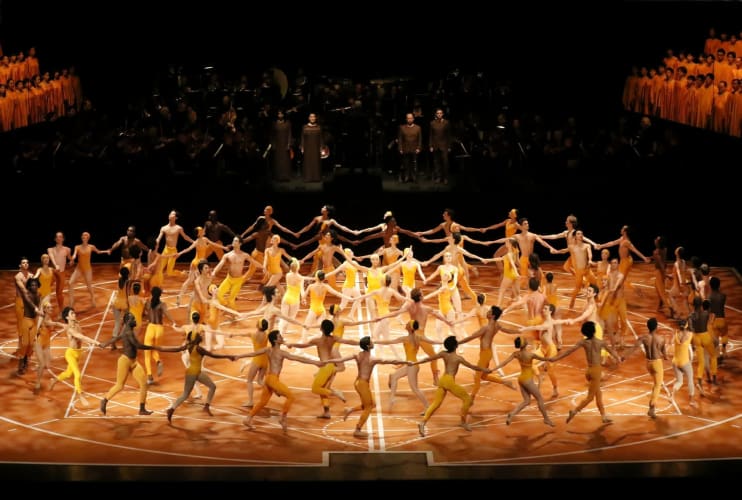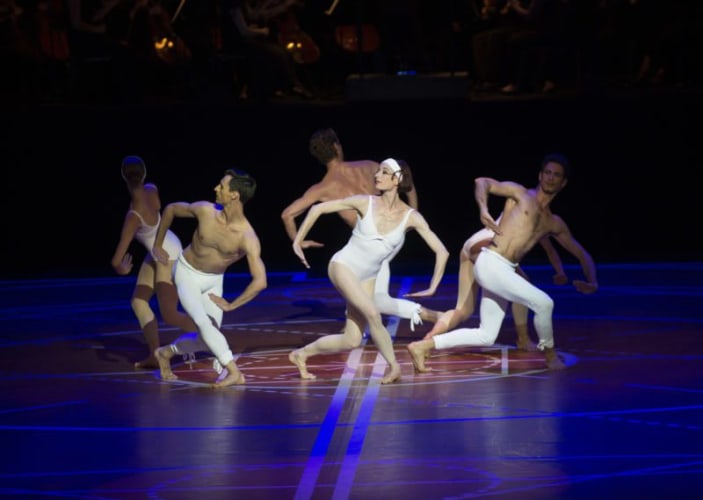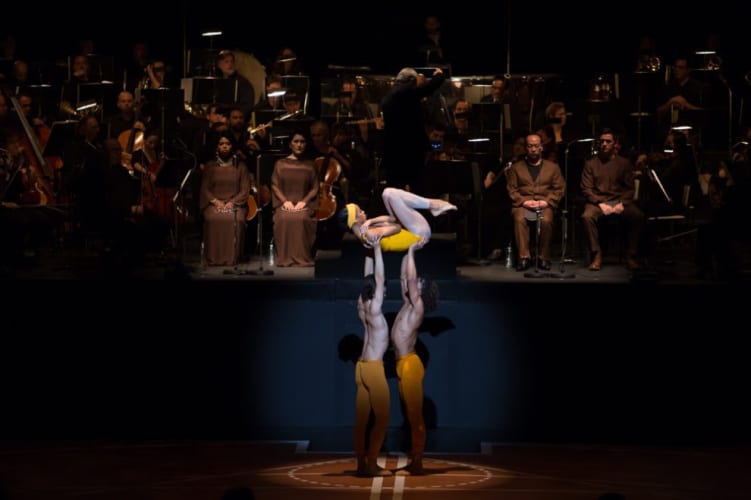Maurice Béjart’s seasons at the London Coliseum in the 1970s gave me some of my best evenings in the theatre, and so it was a real pleasure to be able to see Béjart’s The Ninth Symphony for the first time. Variously described as a dance concert, an event, a manifestation, it was created in 1964, his first full-length work, following his big success with The Rite of Spring and Bolero.
This revival, a joint production by Tokyo Ballet and Bejart Ballet Lausanne, recorded on TV in 2014, confirms the spectacle is as vibrant and powerful now as it was sixty years ago; and its message, advocating living in peace and harmony and embodying universal brotherhood, is as timely as ever.
"The choreography has no concept, goal or theme other than the music it encompasses,” said Béjart. “It’s not a ballet in the general sense of the term but a profound participation in a masterpiece… The dance simply accompanies the languid wanderings of the composer, meandering from dread to joy, from darkness to light.”
The performance begins with Béjart Ballet’s artistic director Gil Roman and Zubin Mehta shaking hands. Roman quotes from Nietzsche’s Birth of Tragedy and there is some furious African drum beating. Finally, we get to Beethoven, played by the Israel Philharmonic Orchestra and sung by soloists and the Ritsuykai Choir.
The first movement is danced by Tokyo Ballet. The second and third movement are danced by Béjart Ballet Lausanne. The fourth movement, Friedrich Schiller’s Ode to Joy, is danced by both companies. The colour of the costumes changes with each movement: from brown to red to white to orange to yellow. The stage floor is full of geometric patterns, lines and circles. The performance is a joy.
Masayoshi Onuki and Kathleen Thielhelm come across as young, flirtatious, free and easy; Julien Favreau and Elisabet Ros are more mature and serious, wary of each other; Oscar Chacon is feral. The exuberant finale has the two companies, a vast number of dancers, all holding hands, and dancing joyfully in circles within circles.
I wish there were opportunities to see Maurice Béjart’s works live in the UK. It would be great to see his Nijinsky again.
Maurice Béjart’s The Ninth Symphony can be watched free on YouTube on the Euro/Arts channel.


